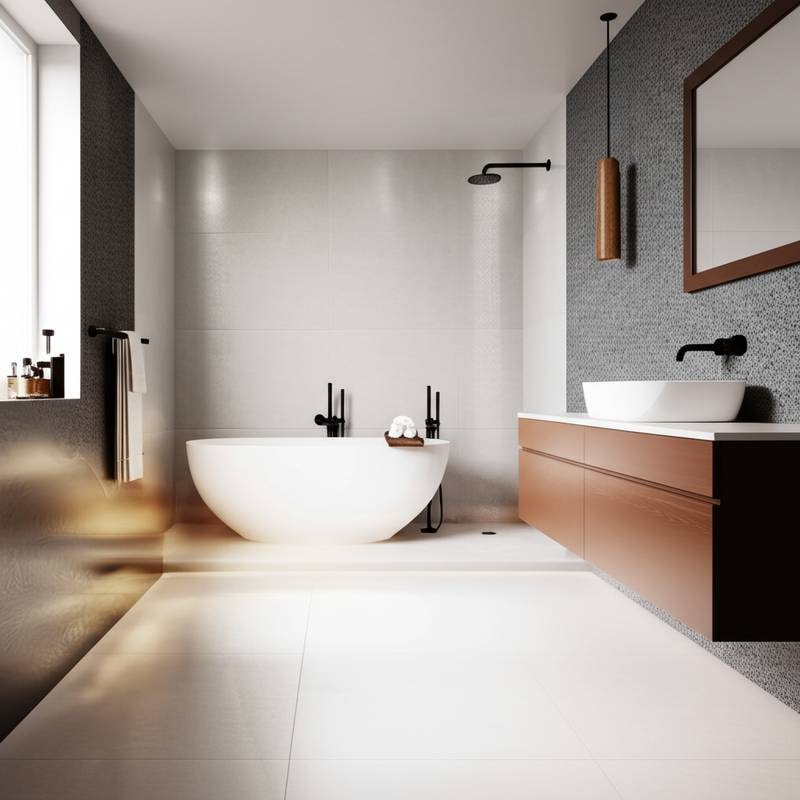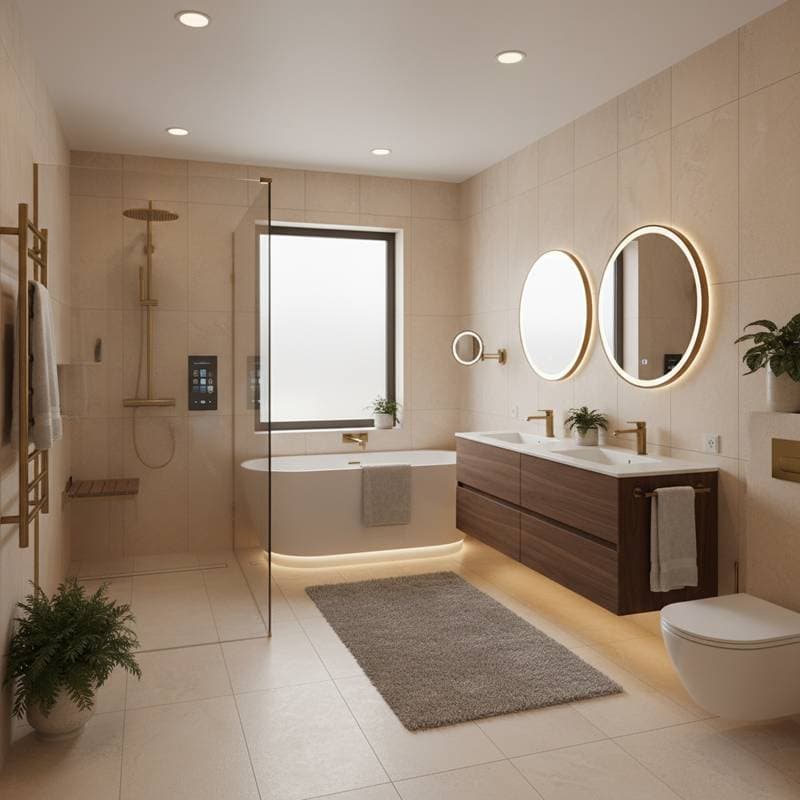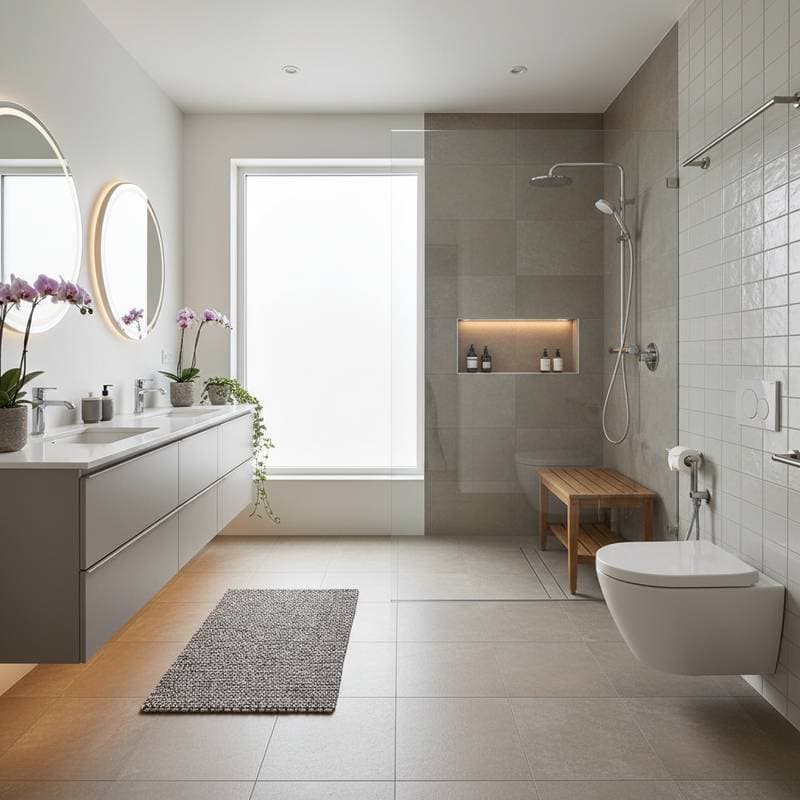Why Japandi Wet Rooms Are Eliminating Tubs in 2025
Homeowners increasingly reevaluate the use of space in bathrooms. The Japandi wet room emerges as the preferred choice for those seeking simplicity, tranquility, and efficiency in a unified area. This style merges Japanese minimalism with Scandinavian coziness. Modern Japandi wet rooms, however, eliminate the conventional bathtub. As a contractor experienced in multiple such remodels, this author observes that the change stems from considerations of utility, upkeep, and suitability for daily routines.
Reasons Tubs Are Fading from Use
The primary factor driving the decline of tubs lies in their infrequent utilization relative to the space and expense they demand. During remodels, clients often mention avoiding baths for years yet retaining the tub under the assumption it boosts resale potential. In reality, prospective buyers now regard such fixtures as inefficient use of area.
A wet room supplants this bulky element with an integrated shower zone. Waterproofing covers the floor entirely, while the drainage accommodates room-wide water flow. This setup yields unrestricted mobility, simplified cleaning, and an illusion of expansiveness, even in compact bathrooms.
Contractors benefit from streamlined plumbing configurations, reduced structural challenges, and fewer vulnerability points for leaks. Consequently, long-term upkeep diminishes, and reliability improves.
Japandi Principles Shaping Contemporary Wet Rooms
Japandi emphasizes equilibrium. It integrates Japanese precision and organic materials with Scandinavian comfort and subdued colors. In bathrooms, this translates to unobstructed planes, wood accents, and emphasis on tactile qualities over decoration.
A bathtub interrupts this harmony by imposing a prominent obstruction in a zone intended for fluidity and serenity. Designers preserve uniform flooring and wall treatments by forgoing the tub, fostering seamless continuity. The shower integrates fully into the room rather than isolating as a distinct section.
Projects featuring Japandi wet rooms often incorporate porcelain tiles mimicking stone, cedar benches, and matte brass hardware. Absent the tub, individual craftsmanship shines. The environment evokes a personal wellness retreat over a standard lavatory.
Practicality Aligned with Contemporary Lifestyles
Efficiency ranks high among homeowner priorities. Desired bathrooms facilitate swift cleaning, rapid use, and enduring performance. Tubs no longer align with these goals. Wet rooms, by contrast, center on routine usability.
- Simplified Upkeep. Uniform floor and wall planes reduce grout seams and eliminate tub perimeters for scrubbing.
- Enhanced Accessibility. Barrier-free access and expansive layouts promote safety across age groups and physical abilities.
- Superior Drainage and Sealing. Comprehensive waterproof layers provide sturdier protection than tub enclosures.
- Adaptable Layouts. Integrate benches, niches, or radiant heating without compromising visual simplicity.
Builders view wet rooms as a means to safeguard future adaptability. Accessibility gains prominence in renovations, and tub removal offers a straightforward path to inclusive design.
Financial Aspects and Enduring Worth
Concerns about diminished resale value upon tub removal vary by situation. In single-bathroom residences, retaining one tub suits households with infants. In multi-bathroom properties, a thoughtfully executed wet room elevates attractiveness.
Initial costs for wet rooms may rise modestly due to sealing and outflow systems. Over years, savings accrue from reduced servicing needs. Expenditures on tile renewal, grout maintenance, and pipe interventions decline without tub vulnerabilities.
Clients receive advice to regard bathrooms as sustained assets rather than fleeting indulgences. A Japandi-compliant wet room endures in style and operation for generations.
Evolving Perceptions of Bathroom Spaces
Bathrooms transcend mere utility; they serve as sanctuaries for repose and focus. Japandi advances this perspective through subtraction and experiential emphasis.
Tub omission reinforces the transition. Overhead shower streams, channel drains, and organic surfaces promote presence over extravagance. The area breathes openness and stability. For numerous owners, this psychological impact surpasses an ornamental basin that gathers dust.
Completed projects reveal clients attaining composure upon entry. Minimal visual elements and fluid planes deliver instant ease. Intentional restraint holds transformative potential.
Pitfalls to Avoid in Wet Room Transformations
Benefits hinge on meticulous execution. Remedial work on flawed conversions highlights frequent oversights. Key errors include:
- Inadequate Sealing. Standard substrates or inexpensive barriers invite moisture intrusion. Apply unbroken membranes over floors and up walls by several feet.
- Flawed Gradient Planning. Direct precise inclines to drains. Minor deviations lead to pooling or subfloor seepage.
- Subpar Air Circulation. Enclosed designs demand robust exhaust to curb dampness. Neglect fosters fungal growth and surface degradation.
- Unsuitable Selections. Unprotected timber or absorbent rock succumbs to humidity. Opt for moisture-resistant variants.
- Overlooked Illumination. Spartan aesthetics require multifaceted lighting for security and ease. Layer general, focused, and soft sources.
Each element influences durability and efficacy. A genuine wet room constitutes a holistic, watertight system demanding accuracy.
Ensuring Effective Collaboration with Professionals
Precise dialogue underpins successful outcomes. Homeowners merit comprehensive schematics, sealing protocols, and drainage mechanics overviews. Inquire about proposed substances and pre-tiling leak assessments.
Contractors furnish insights into care protocols. Durable coatings still necessitate mild, non-corrosive cleansers. Retain records of barriers and guarantees for future recourse.
Reliable experts embrace such exchanges. Evasiveness on sealing or outflow queries signals an unsuitable partner for Japandi endeavors.
Sustained Advantages of Tub-Free Designs
Tub elimination equates to acquiring versatility, security, and assurance. Japandi wet rooms boost marketability, curb ongoing care, and refine habitual comfort.
Formerly reluctant owners report no longing for tubs. They value the liberated area, effortless hygiene, and contemporary appeal. Above all, daily interactions with serene, purposeful spaces enrich life.
Preserving Wet Room Excellence
Post-installation routines sustain peak condition:
- Clear Drains Routinely. Extract residues from channel or central outlets to sustain flow.
- Dry Surfaces Promptly. Squeegee or towel post-use to avert stains and spores.
- Annual Seal Reviews. Examine caulk at fittings and refresh as required.
- Ventilation Upkeep. Service fan components and verify circulation vigor.
- Mild Detergents Only. Steer clear of harsh formulas eroding joints and barriers.
Such practices ensure pristine appearance and seamless operation indefinitely.









